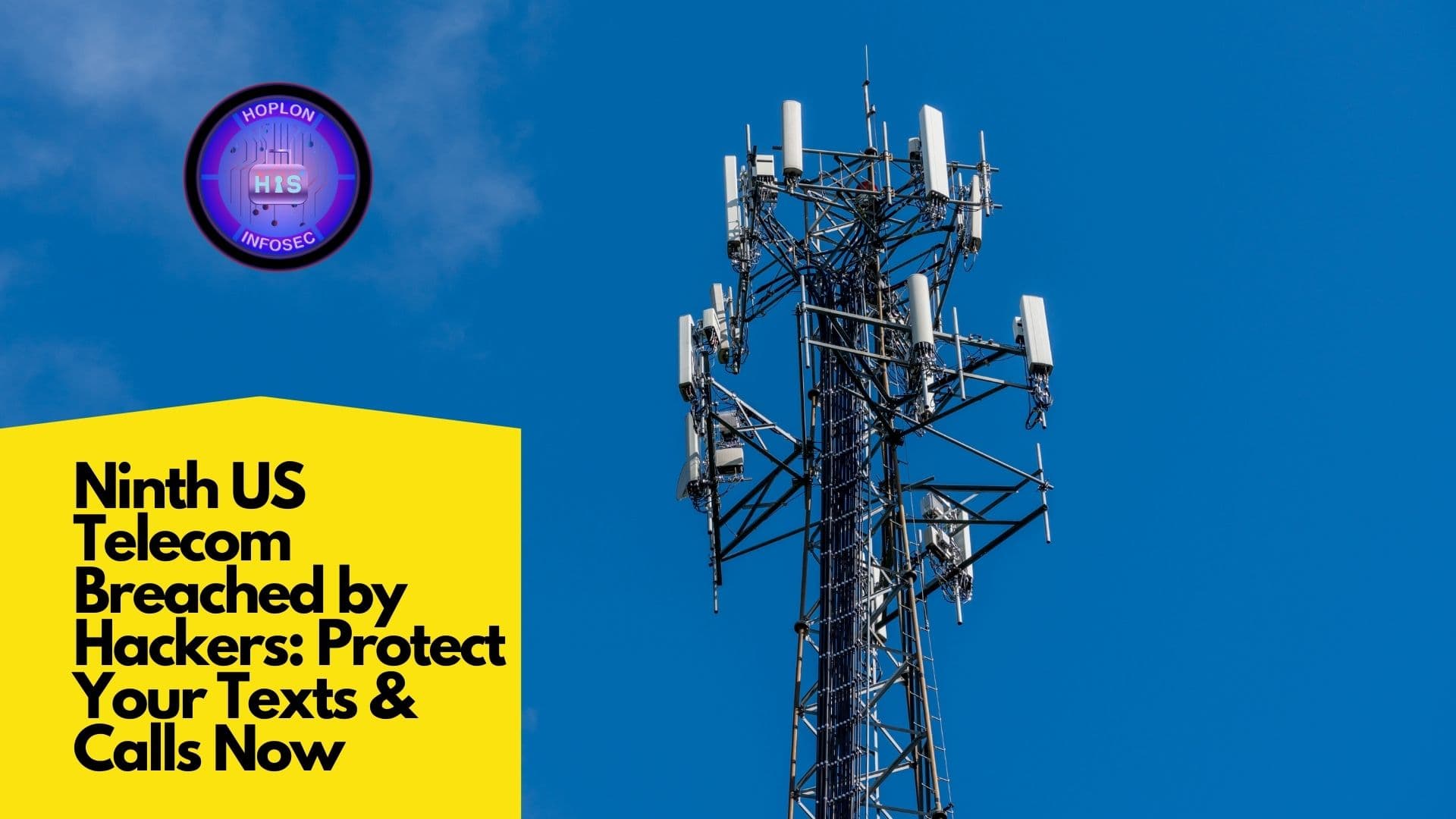Ninth US Telecom Breached by Hackers with Salt Typhoon Campaign

Hoplon InfoSec
28 Dec, 2024
The White House has confirmed that a Ninth US Telecom company has been targeted in the ongoing ‘Salt Typhoon’ cyberattack campaign. This sophisticated operation, attributed to Chinese hackers, has shaken the U.S. cybersecurity landscape, raising serious concerns about national security, privacy, and the vulnerabilities within critical infrastructure.
Understanding the “Salt Typhoon” Campaign
The ‘Salt Typhoon’ cyberattack campaign, which reportedly began in 2022, has leveraged vulnerabilities in critical devices such as routers, switches, and firewalls used by major U.S. telecommunications companies. High-profile targets of this campaign include industry giants like AT&T, Verizon, and Lumen Technologies. By exploiting these vulnerabilities, hackers have gained persistent access to telecommunications networks, enabling them to steal metadata and, in some cases, intercept the content of phone calls and text messages.
Metadata theft is particularly alarming because it allows hackers to analyze communication patterns, such as who is communicating, when, and from where. This information, coupled with the ability to access the actual content of communications, underscores the severity of the breach.
The National Security Implications
Deputy National Security Adviser Anne Neuberger has revealed that the hackers managed to infiltrate the communications of high-ranking U.S. government officials and political leaders. While Neuberger assured that “classified communications” remained secure, the breach of unclassified yet sensitive communications posed a significant risk. Such access could enable hackers to gather intelligence on policy discussions, diplomatic strategies, and other critical matters.
Even more concerning is the compromise of backdoor systems law enforcement uses for court-ordered surveillance. These systems are integral to national security operations, and their exploitation adds another layer of complexity to an already dire situation.
Targeted Espionage and Broader Implications
The campaign’s primary focus appears to be on identifying government targets for further espionage and intelligence collection. An Associated Press report indicates that the hackers obtained metadata that could potentially expose sensitive counterintelligence operations. The scope of the attack is vast, granting hackers “broad and full access” to American data. This includes geolocating millions of individuals and recording phone calls at will.
While the number of individuals targeted for direct communication theft is estimated to be fewer than 100, the broader implications are profound. The ability to geolocate individuals and monitor communication patterns on such a large scale highlights this cyberattack’s sophistication and far-reaching impact.
The U.S. Government’s Response on Ninth US Telecom Breach

In the wake of these breaches, the U.S. government has initiated several measures to bolster cybersecurity and mitigate future threats:
Formalizing Security Requirements
The Federal Communications Commission (FCC) is under increasing pressure to move away from voluntary cybersecurity practices, which have proven inadequate against advanced nation-state actors like China. The FCC is being urged to establish mandatory security requirements for telecommunications providers to ensure a robust defense against similar threats in the future.
Collaborative Efforts
The Cybersecurity and Infrastructure Security Agency (CISA), in collaboration with the National Security Agency (NSA), has formed a working group dedicated to addressing threats to U.S. national security and critical infrastructure. This partnership aims to refine cybersecurity guidance and enhance the resilience of telecom networks.
Protecting Healthcare Data
The Department of Health and Human Services (HHS) proposes new rules to strengthen security requirements under the Health Insurance Portability and Accountability Act (HIPAA). These measures protect sensitive healthcare data from being compromised in cyberattacks like ‘Salt Typhoon.’
Lessons from the Data Breach

Cybersecurity expert Richard Forno described the ‘Salt Typhoon’ attack as “breathtaking in its scope and severity.” This incident underscores persistent weaknesses in organizational cybersecurity practices, particularly in sectors critical to national security.
Vulnerability Management
One key takeaway from this campaign is the importance of proactive vulnerability management. Telecommunications companies must regularly update and patch their systems to close security gaps that hackers could exploit. Comprehensive penetration testing and system audits are crucial to identifying and addressing potential vulnerabilities.
Enhancing Threat Detection
The ability to detect and respond to sophisticated cyberattacks is critical. Organizations should invest in advanced threat detection technologies, such as artificial intelligence and machine learning tools, to identify unusual patterns and potential breaches in real-time.
Strengthening Public-Private Partnerships
Collaboration between the government and private sector is essential to enhancing cybersecurity resilience. Public-private partnerships can facilitate threat intelligence sharing, enabling a coordinated response to cyber threats. The government and telecom companies can develop more effective strategies to mitigate risks by working together.
Holding China Accountable
The U.S. government also focuses on holding China accountable for its alleged involvement in the ‘Salt Typhoon’ campaign. This involves diplomatic efforts to address the issue at an international level and exploring sanctions and other measures to deter future cyberattacks. However, the complexities of attributing cyberattacks to nation-states often make accountability challenging.
Building a More Secure Future

The ‘Salt Typhoon’ campaign serves as a stark reminder of the evolving nature of cyber threats and the need for robust defenses. As technology advances, so do the methods employed by malicious actors. Organizations and governments must prioritize cybersecurity as a fundamental aspect of their operations to build a more secure future.
Educating the Workforce
Cybersecurity awareness training is essential for employees at all levels. By educating the workforce on best practices, such as recognizing phishing attempts and maintaining strong passwords, organizations can reduce the risk of human error contributing to breaches.
Adopting Zero Trust Architecture
The zero-trust security model, which assumes that threats exist inside and outside the network, is becoming increasingly important. By implementing strict access controls and continuous monitoring, organizations can minimize the potential impact of breaches.
Investing in Research and Development
Ongoing research and development in cybersecurity technologies are crucial to staying ahead of emerging threats. Investments in quantum cryptography and secure communication protocols can help protect sensitive data from advanced cyberattacks.
Conclusion
The ‘Salt Typhoon’ cyberattack is a wake-up call for the telecommunications industry and national security stakeholders. Its unprecedented scale and sophistication highlight the urgent need for stronger cybersecurity measures. By addressing vulnerabilities, enhancing threat detection, and fostering collaboration, the U.S. can work towards preventing similar breaches in the future.
Ultimately, cybersecurity is a shared responsibility requiring a collective effort from governments, organizations, and individuals. The lessons learned from the ‘Salt Typhoon’ campaign must serve as a foundation for building a more resilient and secure digital ecosystem.
For More:
Share this :